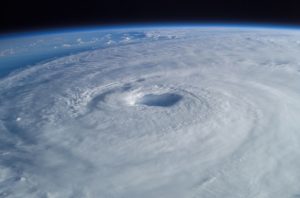 A new paper co-authored by Tanya Havlicek, Principal, Science and Analytics at CoreLogic; Ian Giammanco, Managing Director of Standards & Data Analytics and Lead Research Meteorologist, Institute for Business & Home Safety (IBHS), William Pogorzelski, Applied Statistician at IBHS, and Milad Shabanian, Codes & Standards Engineer at IBHS explores the hypothesis if building codes could help mitigate physical, and therefore financial risk, during a hurricane landfall.
A new paper co-authored by Tanya Havlicek, Principal, Science and Analytics at CoreLogic; Ian Giammanco, Managing Director of Standards & Data Analytics and Lead Research Meteorologist, Institute for Business & Home Safety (IBHS), William Pogorzelski, Applied Statistician at IBHS, and Milad Shabanian, Codes & Standards Engineer at IBHS explores the hypothesis if building codes could help mitigate physical, and therefore financial risk, during a hurricane landfall.
According to IBHS, a trend has developed since Hurricane Charley in 2004 that risk management strategy has also helped mitigate financial losses, specifically the risk of default over 90 days following a damaging event.
The data used to examine their hypothesis were the four major landfalling hurricanes affecting areas with a diverse age of building stock, code adoption and enforcement history. Hurricanes Irma (2017), Harvey (2017), Michael (2018) and Laura (2020) were similar with respect to type and scale. The study focused particularly on areas damaged by wind and not water.
First, the research team at IHBS closely examined the history of building codes across the U.S., identifying key milestones in improvements, such as the creation of The National Wind Standard in 2001. Using these milestones in code improvements, researchers identified seven building code eras. Individual properties could then be assigned to an era based on which codes were adopted when the property was constructed.
The scientists then combined the building code specifications data with CoreLogic’s data on loan payment performance, loan/borrower underwriting characteristics, home asset and structure characteristics, and forensic wind speeds at a location during a storm.
Finally, the team examined the correlation between code era adoption, wind damage and mortgage default. Each storm showed a mortgage delinquency uptick from 90 days following the event.
The joint CoreLogic/IBHS report found that the adoption of modern building codes was shown to be statistically significant in reducing mortgage delinquency rates after a hurricane. The study shows that the adoption and enforcement of strong building codes strengthen the resilience of families and the financial sector at large.
- After looking at traditional underwriting risk factors that influence mortgage delinquency rates along with the structure age, the least risky borrowers were in homes built under the era from 2007 to the present day.
- The code group with the oldest homes, which have little in the way of building codes, showed the highest delinquency rates post-hurricane. However, homes built from 2006-2009 showed the highest raw data delinquency rates due to the riskier nature of the loans associated with mortgages from the period. Homes built in the late 1970s and early 1980s were also quite vulnerable. During this era, homes were often built quickly with little code adoption, and the codes that did exist were insufficient.
- Structural improvements and enhancement benefits are only seen during and after hurricanes. Other drivers of default are more prevalent outside of a damaging weather event.
The ripple effects of mortgage delinquency do not simply affect homeowners, as seen during the Great Recession, but information found increases in mortgage delinquency rates following extreme weather, illustrating that natural disasters contribute to financial risk in the mortgage market at large.
The researchers have also confirmed correlations between property damage and mortgage delinquency after Hurricanes Harvey (2017) and Ida (2021).
CoreLogic has also shown a pattern of sharp increases in mortgage delinquencies following climate disasters such as hurricanes, flooding and wildfire.
The Federal Emergency Management Agency (FEMA) estimates that by 2040, the U.S. will have prevented $132 billion in cumulative losses due to the adoption of ever improving building codes. Unfortunately, as of November 2020, 65% of counties, cities and towns across the U.S. still had not adopted modern building codes.
Commenting on the final analysis, Tanya Havlicek, Principal, Science and Analytics at CoreLogic noted:
“What stood out to me were the interactions among traditional underwriting risk variables and building codes. When you look at the raw default data by building code, you do not see the effect clearly. It is only after performing a multivariate analysis accounting for traditional underwriting factors that the signal emerges. We also see that the pattern of default changes from normal times to post-catastrophe periods. The benefit of modern building codes is most significant after a catastrophic event.”
It is perhaps because of this delay in seeing the benefit of modern codes that there is a lag in support for adopting them.
Maintaining documentation on building code adoption history is crucial for state and local code jurisdictions. When combined with property data, this documentation provides an accurate way to evaluate property risk and can be used to help justify the resources needed to maintain and enforce building codes.
Click here to view the paper in its entirety.

 DSNews The homepage of the servicing industry
DSNews The homepage of the servicing industry









